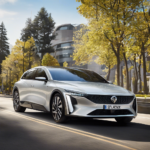Are you tired of straining your eyes while driving at night or feeling that your car’s lighting could be safer and more modern? Upgrading your vehicle’s lighting system is one of the most effective ways to improve both the aesthetics and functionality of your car. Whether you’re an auto enthusiast looking for a custom look or simply seeking better visibility, this guide will take you through the process of enhancing your car’s lighting setup. From understanding the different types of lights to choosing the right bulbs and exploring advanced lighting technologies, get ready to illuminate your driving experience!
The Basics of Car Lighting
Before diving into the world of upgrades, let’s familiarize ourselves with the primary types of car lights and their functions. Standard lighting equipment includes headlights, taillights, turn signals, brake lights, and interior lights. Each of these plays a crucial role in ensuring visibility, safety, and communication with other drivers. Headlights, for instance, are essential for illuminating the road ahead, while taillights and brake lights notify drivers behind you about your car’s position and braking actions.
Types of Upgrade Options
When it comes to enhancing your car’s lighting system, several options are available to suit different needs and preferences:
1. LED Lights: Light Emitting Diodes (LEDs) have become increasingly popular for car lighting due to their energy efficiency, longer lifespan, and bright output. Upgrading to LED headlights, fog lights, or interior lights can significantly improve visibility and give your car a modern touch. The crisp, white light of LEDs can make your vehicle stand out while enhancing safety on the road.
2. HID Lights: High-Intensity Discharge (HID) lights, also known as xenon lights, produce a powerful beam of light by igniting an arc between two electrodes. HID headlights can provide up to three times more light output than standard halogen bulbs, greatly improving night-time visibility. Their distinctive blue-white hue can also give your car a sleek and customized look.
3. Halogen Bulbs: If you’re looking for a more affordable upgrade, replacing your standard halogen bulbs with higher-performance options can still make a noticeable difference. Newer halogen bulbs on the market offer improved lumens (brightness) and color temperature, providing better illumination without straining your wallet.
4. Retrofitting: For those seeking a more advanced upgrade, retrofitting allows you to install a completely new lighting system. This method involves replacing not just the bulbs but also the reflectors and housings with more efficient and modern designs. Retrofitting can be done with LED or HID kits, allowing for enhanced brightness, color temperature adjustments, and unique lighting patterns.
Benefits of Upgrading
Upgrading your car’s lighting system offers numerous advantages:
– **Enhanced Visibility:** Brighter and more modern lighting options significantly improve night driving visibility, making it safer and more comfortable.
– **Customized Appearance:** The diverse range of lighting technologies and styles available allows you to personalize your vehicle’s look, from sleek HID headlights to the distinct glow of LED lights.
– **Longevity:** LED and HID lights generally last much longer than traditional halogen bulbs, reducing the frequency of replacements.
– **Energy Efficiency:** LED lights, in particular, consume less power, reducing the load on your car’s electrical system and potentially improving fuel efficiency.
Choosing the Right Bulbs
Selecting the appropriate bulbs for your car lighting upgrade is crucial. Consider factors such as brightness (measured in lumens), color temperature (measured in Kelvin, K), and the overall fit for your vehicle’s housing. For headlights, a higher lumen output and a color temperature between 5000K-6000K is generally recommended for better visibility without compromising the comfort of other drivers.
Installation Process
Installing upgraded lighting can vary in complexity depending on the type of upgrade. LED and HID bulbs often require simple plug-and-play installation, while retrofitting may demand more technical skills and knowledge. It is essential to follow the manufacturer’s instructions and, if in doubt, consult a professional mechanic or an experienced DIY enthusiast.
Legal Considerations
While upgrading your car’s lighting system can be exciting, it is crucial to ensure that any modifications comply with local laws and regulations. Some jurisdictions have specific rules regarding the color and brightness of headlights, as well as the use of certain technologies like strobes or flashing lights. Always research and understand the legal requirements in your area before making any modifications.
In conclusion, upgrading your car’s lighting system offers numerous benefits, from improved visibility and safety to a personalized appearance. Whether you opt for a simple bulb replacement or a more advanced retrofit, investing in better lighting is a smart move for any vehicle owner. With the right knowledge and a bit of research, you can choose the ideal upgrade for your car, ensuring a brighter and more enjoyable driving experience for years to come. Happy driving!










